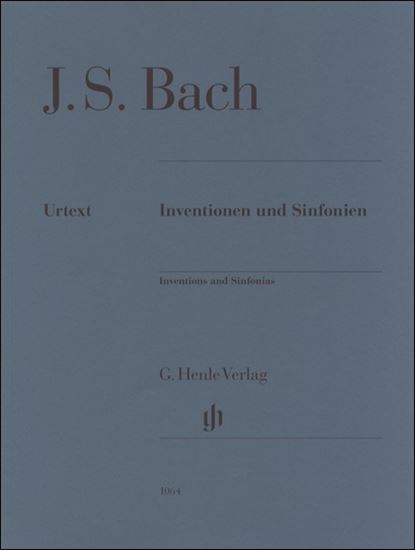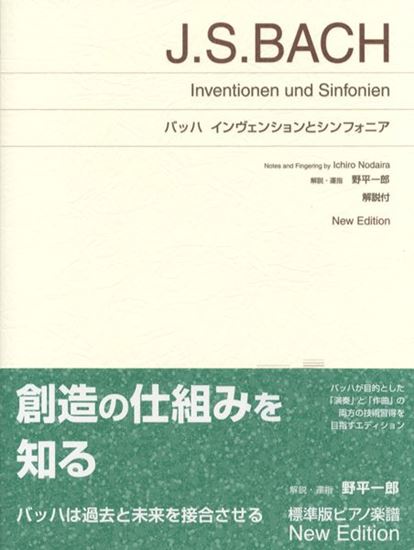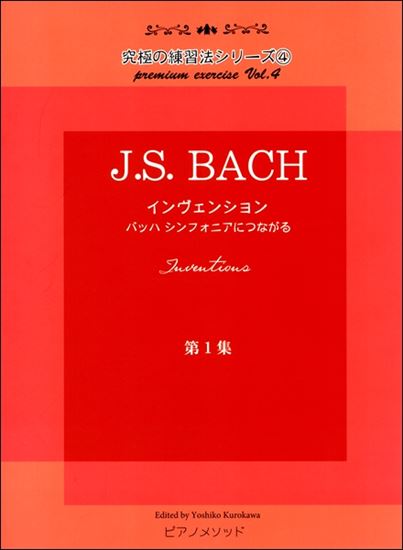Bach, Johann Sebastian : Invention Nr.1 C-Dur BWV 772
Work Overview
Genre:pieces
Total Playing Time:1 min 20 sec
Copyright:Public Domain
Commentary (3)
Author : Takamatsu, Yusuke
Last Updated: September 18, 2020
[Open]
Author : Takamatsu, Yusuke
C major, 4/4 time.
The "invenzione" (conception) of this piece is found in the theme presented through imitation in both voices. This concise theme is designed to be developed contrapuntally throughout the piece, for instance, by being repeated a fifth higher in measure 2, or by having its opening motive used in a sequential progression from measure 3.
The piece consists of three thematic exposition sections. After the first exposition section (measures 1-6), the second exposition section (measures 7-15) progresses through G major, D minor, and A minor, followed by the third exposition section (measures 15-22) leading from A minor to the tonic C major.
As for the "elaborazione" (elaboration), the technique of developing a concise motive is notable. For example, this can be observed in:
- The use of the inversion of the opening motive in the sequential progression from measure 3.
- The appearance of the inversion of this sequential progression from measure 19.
- The alternating imitation of the opening motive and its inversion by both voices from measure 15.
Author : Hayashikawa, Takashi
Last Updated: March 15, 2018
[Open]
Author : Hayashikawa, Takashi
[Musical Analysis Diagram]
Score examples provided by: Bärenreiter (Bärenreiter Verlag)
Author : Ooi, Kazurou
Last Updated: March 12, 2018
[Open]
Author : Ooi, Kazurou
No. 1 in C Major
In Bach's works, where he assigned a character to every key, C major (C-dur) evokes an image of innocence and purity, like the color white. To understand the character of Bach's keys, it is important to listen to pieces in the same key. For example, if it's C major, try listening to other pieces in C major and identify the common mood.
While the author feels that many of Bach's C major works are subdued, surprisingly few pieces are written in C major. Besides this Invention, examples include the Prelude BWV 933, the Well-Tempered Clavier, and the Sinfonias.
One key does not necessarily have only one character; some keys possess multiple characters. However, in the case of C major, it does not portray extreme seriousness or extreme tension, but rather a remarkably pure character.
Nevertheless, one should not be confined to a single character or mood; performers should feel free to play as they wish. This implies that several tempos can be considered for this Invention, and at the same time, one is free to consider elements not explicitly written in the score, such as articulation and dynamics. Furthermore, the mood can change considerably depending on the mordents. It would be beneficial to experiment with these aspects.
Also, try to imagine whether this piece was played on a harpsichord or an organ.
Another performance hint is the portrayal of keys, as the mood changes with each modulation.
Control the dynamics to create the mood for each key.
Other Points to Consider
- From the fourth beat of measure 5 to the second beat of measure 6, a crescendo occurs. The question then arises whether the third beat of measure 6 should be louder or softer than the second beat of the same measure. The left hand ascends to G on the second beat, then descends to E, and then to B. The right hand reaches E on the second beat, and although a high G awaits on the third beat, the initial note of the third beat descends from E to D from the previous beat. How to interpret this is up to the performer.
- It would be appropriate to play measure 10 louder than measure 9, reaching forte at measure 11.
- The phrase in measure 14 concludes with the right hand's A in measure 15. After that, it moves to an A an octave higher with a sixteenth note, at which point a subtle pause should be taken, almost imperceptibly.
- From measure 15, the music gradually descends, following a sequence. This series of sequences continues until measure 18. Since it is descending, a diminuendo is desirable, but particular attention should be paid to the transition from measure 17 to measure 18, as this is a harmonic resolution. It would be beneficial to play measure 18 with this in mind.
Arrangements & Related Works(3)
Matsumoto, Asuka: インベション~primo~(バッハ)
Total Performance Time: 2 min 30 sec
ZEN-ON MUSIC co.,LTD.: Invention Nr.1
Total Performance Time: 1 min 40 sec
PTNA & Partner Channel Videos(11items) View More
Sheet MusicView More
Scores List (53)

(株)全音楽譜出版社

(株)音楽之友社

(株)全音楽譜出版社

カワイ出版

(株)ヤマハミュージックエンタテインメントホールディングス
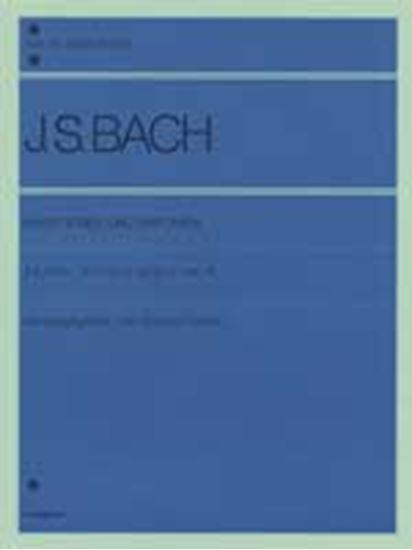
(株)全音楽譜出版社
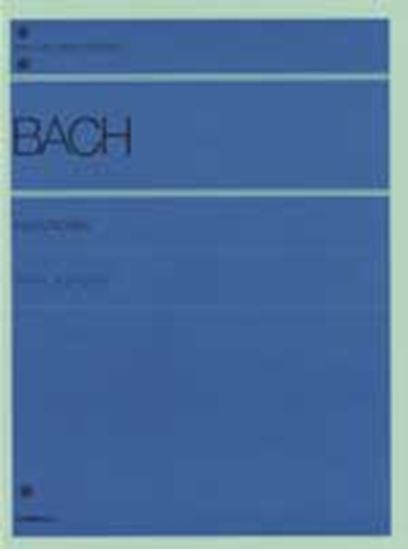
(株)全音楽譜出版社

(株)ドレミ楽譜出版社

(株)ヤマハミュージックエンタテインメントホールディングス

(株)ヤマハミュージックエンタテインメントホールディングス

(株)ヤマハミュージックエンタテインメントホールディングス

(株)リブロポート

(株)ヤマハミュージックエンタテインメントホールディングス

(株)全音楽譜出版社

(株)ドレミ楽譜出版社

(株)ドレミ楽譜出版社

(株)音楽之友社

(株)全音楽譜出版社

(株)音楽之友社

(株)音楽之友社

(株)ドレミ楽譜出版社

(株)ドレミ楽譜出版社

(株)ドレミ楽譜出版社

(株)ドレミ楽譜出版社

カワイ出版

(株)渓水社

(株)音楽之友社

(株)全音楽譜出版社

(株)エー・ティ・エヌ

(株)全音楽譜出版社

カワイ出版

(株)音楽之友社

(株)音楽之友社

(株)ヤマハミュージックエンタテインメントホールディングス

(株)全音楽譜出版社

(株)学研プラス

(株)音楽之友社

(株)ヤマハミュージックエンタテインメントホールディングス

(株)ヤマハミュージックエンタテインメントホールディングス

(株)音楽之友社

(株)音楽之友社

Neil A. Kjos Music Company















